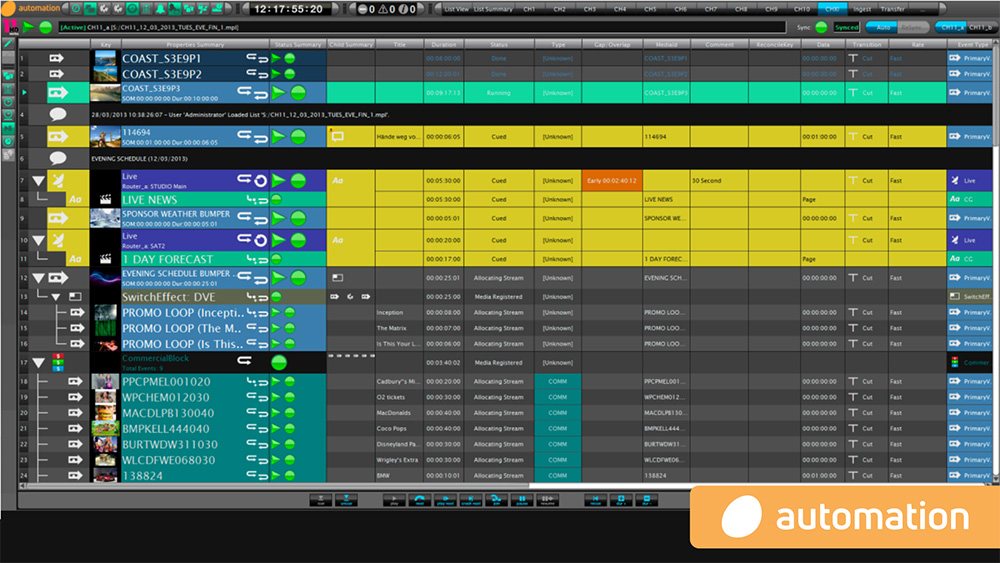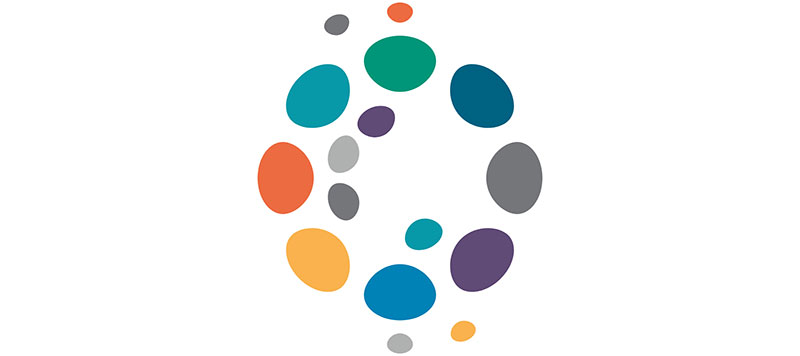Thought Leadership
From Peter Mayhead, CEO, Pebble
When playout automation became a practical proposition, in the distant days of the last century, it was developed to replicate the broadcast standards of output, which previously had required a large number of people and manual synchronisation of people and hardware. The goal was to present a television channel as a seamless stream of programmes, commercials, idents, trailers and all the other interstitials you need to fill 25 frames of every second of every minute.
That is important. Viewers have an expectation, based on everyday experience, of that seamless stream. Broadcasters often use break bumpers or sponsorship branding to clearly delineate between commercials and content, but as far as the viewer is concerned everything flows without a break, a glitch or an interruption.
And, as anyone who has worked in playout – automated or otherwise – knows, this is actually challenging. It is somewhat less stressful now when all the material is on servers, rather than on tapes to be cued, but it still takes planning and control. Thanks to the efforts of companies like Pebble, we take it for granted.
There has been a shift in scale, of course. Where once a broadcaster was responsible for one or a handful of channels, now specialist playout businesses have come into being, delivering hundreds of channels for multiple clients, with clear firewalls between them. Traditional playout automation technology has evolved to deliver this.
But acknowledging the fundamental principles of seamless, high quality playout, and noting that they have largely been delivered since the start of automated playout, overlooks the transformational change that has happened in the world of media delivery. Where once broadcasters – terrestrial, cable or satellite – were far and away the main source of content for consumers, now the landscape has changed, with online services ranging from niche interests on YouTube to massive streaming networks with a global reach.
This profusion of services has led to new competition. Traditional broadcasters find themselves under severe threat. For most, funding comes from commercials. Television has always been able to charge healthy sums for advertising time, because it is seen as a premium product – delivering the message to an audience that had little option but to see it – and because broadcasters managed the placement of spots, so appropriate ads reached relevant audiences (and inappropriate ads were carefully quarantined). Simple demographics were applied to ensure a receptive audience for each advertiser’s offerings.
Streaming
Online services have transformed this. Mass services drop ads into streams, seemingly more or less at random, with little regard either for the flow of the output or for the appropriateness of the placement. Some of the big streaming businesses, in their ad-supported services, have given up on the seamless output concept and viewers are expected to tolerate several seconds of black and silence into and out of breaks.
Broadcasters retain the ability to deliver a seamless stream, and continue to offer the “broadcast premium” of curated commercial breaks. But this alone is unlikely to be enough to win exclusive viewer loyalty or fight against advertisers tempted by the simplicity and low cost of highly automated online advertising.
The only thing that will retain audiences and thereby maintain the broadcast business model is content. They have to show the programmes that viewers want to watch.
Again, we are all aware that the big streamers have invested massively in the sort of content that was previously the realm of the big broadcaster. Shows like Bridgerton and Ted Lasso have used massive budgets to achieve popular success and win awards. So it is becoming almost impossible to compete there.
The real nirvana – certainly from a commercial point of view – is live content, and in particular live sport. The potential advertising revenue is massive, up to the $8 million a spot for Super Bowl LIX. In 2022, a single Alexa Super Bowl spot cost $26 million just for air time (Scarlett Johansson’s starring role probably did not come cheap, either).
Broadcasters have traditionally sport and its revenues to themselves, using their relatively low latencies to guarantee immediacy. But the multi-national streamers have now moved onto the pitch, spending very large sums on content rights.
Whether a legacy broadcaster or a (relative) newcomer streamer, the audience expectations are the same. Advertising is expected to(and arguably in the case of Super Bowl a central part of the experience) but it is the action on the pitch that is absolutely paramount. Audiences expect the highest quality presentation, and will certainly not tolerate any interruption.
Pebble’s flexible automation platforms support this, whatever the type of business offering the content. It provides all the support needed to ensure advertising commitments are made, but it also provides the operator facilities to take the opportunities for commercial breaks when they present themselves, and – much more important – ensures you can get back into the live feed without missing a single second of action.
Complexity
This is why it is difficult to eliminate master control operators completely from sports broadcasting: largely its unpredictable nature. Football or rugby has clearly delineated moments for extended commercial breaks, but cricket or tennis demands an operator, watching the action, using judgement to drop in a spot into a break in play.
Where broadcasters and playout automation specialists should be collaborating is to make that operator as effective as possible. Maximising revenue means targeting every spot to the audience, which could be divided by geography and by demographics. The automation platform of the future should be empowering the operator to tailor services across large numbers of different audiences.
It is perfectly practical to have a single playout operator managing the feed of a major event to multiple countries, and to multiple regions within them, and to multiple platforms – including streaming – within those regions, and to multiple service levels on each delivery fabric. Throw in different advertising legislation across national borders, and the complexity builds.
Now make the commercials schedule not just a list of spots that have to be shown before the end of play, but a much more dynamic offering which reacts to events on screen and in the world around. If a game is getting particularly exciting, the sales house may see advertisers outbidding to get on the playout list as the action hots up.
The operator is now facing a very complex operation, on multiple levels, yet still has to be on top of the situation to react when the advertising opportunity comes up. The playout automation platform has to abstract all that complexity away, helping the operator make the right decisions at the critical moment, and eliminating the possibility of errors.
And while it may now involve a lot of feeds and automated decision-making, the critical control still has to be in the hands of the operator, who uses experience to determine the precise moment to come out of the live feed, and even more critically to go back in. Nothing is more certain to enrage a sports fan than missing a critical piece of the action, so the operator has to be able to switch back to the live feed instantly and seamlessly, without a frame dropped.
Behind the scenes, all this involves very sophisticated interfacing between multiple systems, as well as the core machine control to deliver the seamless flow of material. But developing interfaces and finding intelligent ways to interwork is a core part of what Pebble does. This is where the next generation of playout automation lies: in allowing the business demands of users to create extremely complex environments, yet presenting them to the operator in a clear, intuitive and secure form.
Whether legacy broadcaster, specialist channel or streamer, the future lies in seizing technology that supports business creativity, enabling commercial offerings that will maximise revenues and secure the future. Pebble has 25 years’ experience of delivering the most trusted, reliable and feature-rich playout technology, and its software platform and technical skills convert that creative thinking into practical, secure, dynamic operational solutions.
Thought Leadership from Pebble
www.pebble.tv






